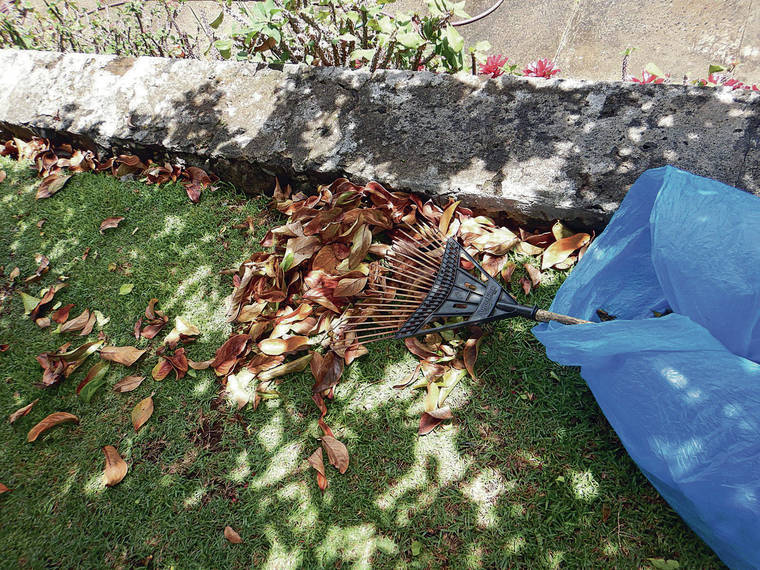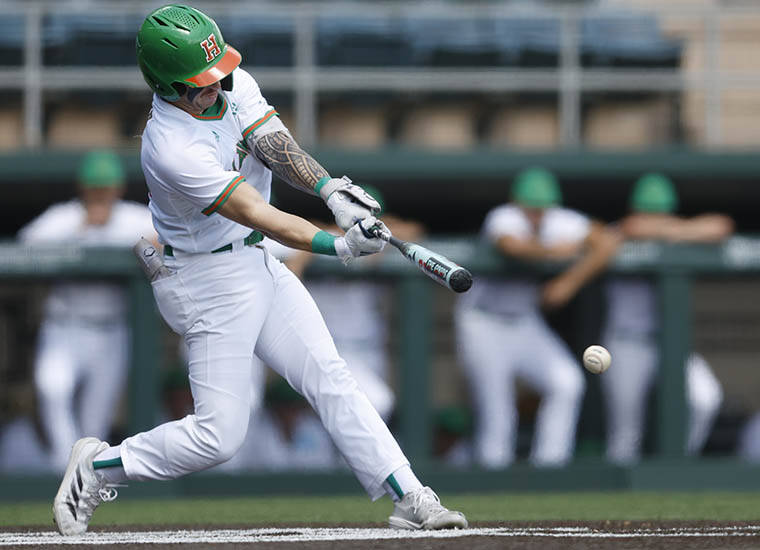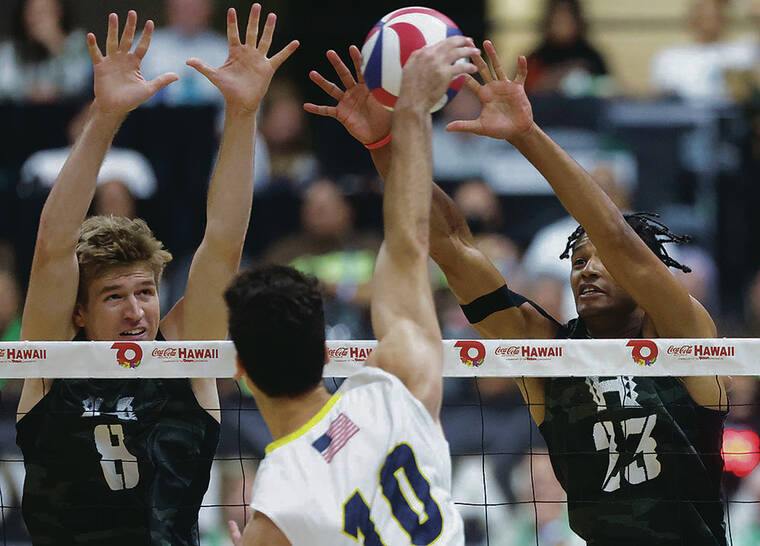Hawaii Gardens: Fallen leaves can be turned into ‘gold’ for the garden

COURTESY HEIDI BORNHORST
The browned leaves of the ohia ai, or mountain apple tree, can be used to make mulch for the garden.
Farmers of old have long used and valued leaves to create and maintain good soil. Good soil is “alive” with beneficial microorganisms. Leaves can be valuable tools in our backyard gardens to enrich plants and soil.
While some people rake up and throw away their leaves, I consider them “gold” to use as mulch for the garden — much better than chemical fertilizers. Plus, raking can be good exercise while practicing social distancing — it works your arm muscles.
What are the best kind of leaves?
>> Monkeypod
>> Koa
>> Legumes like kiawe with fine leaves
Don't miss out on what's happening!
Stay in touch with breaking news, as it happens, conveniently in your email inbox. It's FREE!
>> Ulu
Monkeypod, koa and kiawe are great to help balance nitrogen levels. Smaller leaves have more surface area, which means they will decompose more rapidly than larger ones, releasing nutrients that are available for plants to absorb and use.
Ulu, or breadfruit, leaves make excellent soil-building compost and they are so pretty too!
But really, any leaves will work.
Bigger leaves such as those from mango, lychee, mountain apple and avocado trees can be cut up or shredded to make them decompose more quickly.
If you cut them up with clippers, soak them in a bucket for a while before using as mulch. If you have a chipper or shredder, you can use it to make fine leaf cuts (make sure the chipper has sharp, clean blades). You can also run the leaves over with a lawn mower to create smaller pieces.
If you get your trees trimmed professionally, ask them to chip the leaves and branches too. This makes excellent mulch and compost.
Or you can mix together fine textured leaves with large leaves to create a compost.
Pro tip for those who grow anthuriums: We grew up using hapu‘u, Hawaiian tree fern trunks for anthuriums with an orchid potting medium. But it’s not sustainable to use hapu‘u, it’s better to let them grow in our gardens and rainforests. A trick I learned from my old Foster Botanical Garden boss, Masa Yamauchi: Use lychee or mango leaves for potting medium in your anthurium pots.
My neighbor Cindy likes a neat yard and does daily raking. And even though she’s my good friend and a very tidy gardener, she throws her leaves away! So I go and harvest them out of her green bin.
But be careful of using grass clippings as mulch — the gardeners who cut Cindy’s lawn had dumped a bunch of grass in the bin too. I don’t want to use any grass; it might have weedy seeds, along with too much nitrogen. I dug through the bin and separated out the good leaves, amidst rain and wild winds. All in all, it was quite a workout. I loaded up the bags, buckets and boxes of leaves and brought them home to my garden.
I prioritized the plants that needed extra nurturing:
>> Food plants
>> Rare Hawaiian banana variety that is struggling
>> Rare gingers
>> Ohia lehua
>> Palapalai ferns
>> Rare native Hawaiian hibiscus: koki‘o ke‘o ke‘o, or Hibiscus punaluensis
I distribute the leaves among them and watered them. Adding water helps “stick” the leaves in place, and starts the decomposition process.
Plus when the tradewinds are up, I don’t want the mulch to blow around the garden.
Heidi Bornhorst is a sustainable landscape consultant specializing in native, xeric and edible gardens. Reach her at heidibornhorst@gmail.com.






